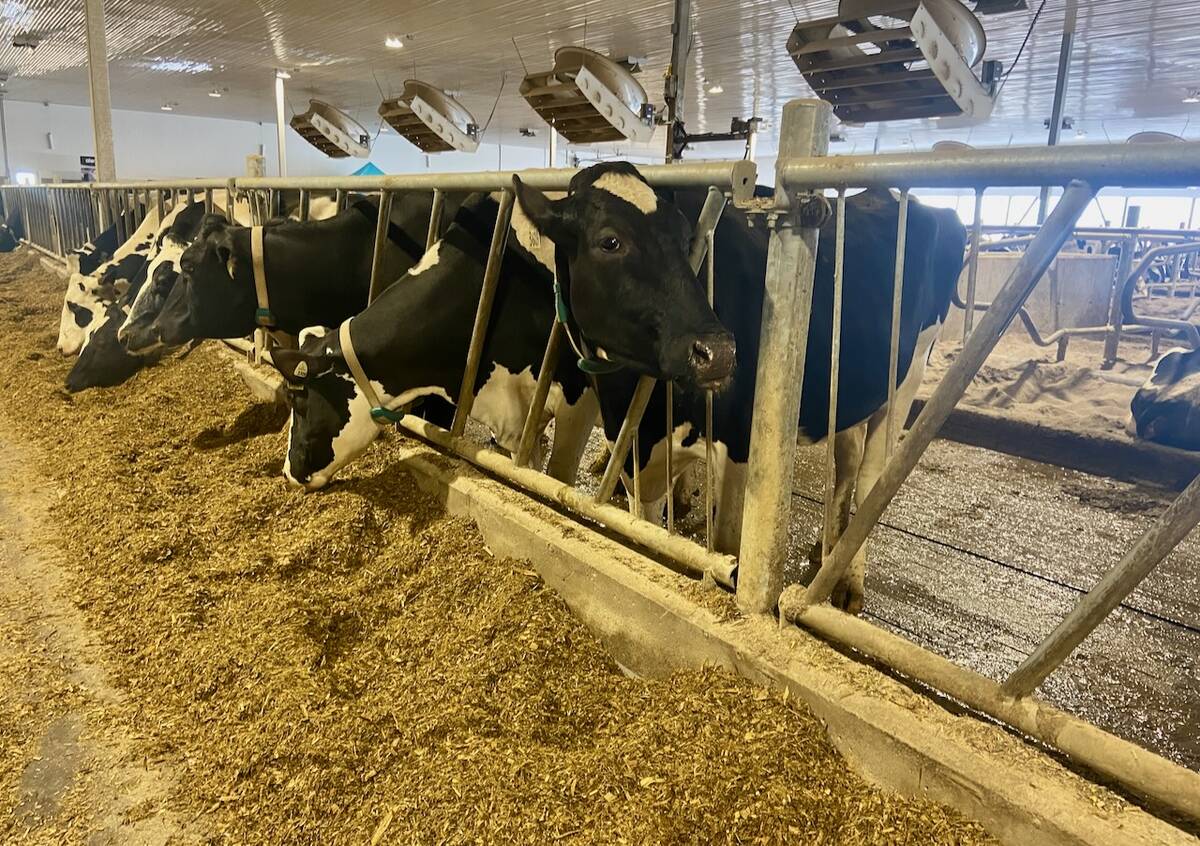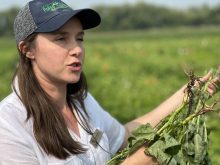Farmers using vertical tillage or deep tillage to break through hardpan say their waterlogged fields often dry quickly after the operation.
But what about using chemistry to break up that hardpan?
It’s not as far-fetched as it sounds, according to an American soil amendment company.
Tillage may address the immediate hardpan issue at the time of the operation, but it does not address the cause or provide a long-term solution, said Greg Cherek from Bio Tech Nutrients’ (BTN) Nebraska office.
Read Also

U.S. farm group supports supply management
U.S. grassroots farm advocacy group pushing new agriculture legislation that would move towards supply management like Canada has for dairy industry
“Most farmers think hardpan is caused by machinery compaction or tillage tools, but that’s only part of the story,” Cherek said.
“Salts allow the soil to develop an extremely high shear strength. Salts bind smaller soil particles together to form larger particles and eventually a solid layer. Farmers in the Midwest used to call it the hardpan layer. Now they refer to it as the saltpan layer.”
Cherek said salt and other elements in the soil carry a positive or negative electrical charge. The positive/negative attraction causes soil particles to grow larger as salt binds to them. The result is less free space for water.
Cherek said the end result is high shear strength, which leads to large clumps and eventually the hardpan layer.
That layer prevents water and plant roots from penetrating into the lower soil profile. Water sits on the surface and the farmer thinks his field is saturated.
The answer is to break up the hardpan, which farmers have accomplished using vertical tillage.
“(But) our approach is to reduce the soil shear strength by getting rid of some of the salts instead of using tillage,” Cherek sald.
Permanently breaking down one large soil particle into hundreds of small particles creates more space for water without saturation.
As well, plant roots will be able to move more easily through the soil.
“We all know when you do a root dig, we see that the roots hit the hardpan layer and then go sideways,” he said.
“We just assume they follow the top of the hardpan layer because they can’t break through. And that’s partly true.
“But there’s another factor at work here. The very tip of the roots is where the biologicals are working. The biologicals are very sensitive. The roots tips are very delicate.”
He said reducing the amount of salt in the soil has two benefits:
• The roots and the biologicals become more active because the salt no longer inhibits them.
“As a result, you get a large root mass with lots of fine hair roots and lots of branching.”
• There are fewer electrically charged ions, so the large soil clumps start to break down and the hardpan disappears. Water standing on the surface penetrates into the soil profile and mud turns into a workable seedbed.
“Basically, we solve the mud issue by addressing the salt issue. We have ingredients in BTN+ that specifically deal with salts.
“Some of these ingredients are kelp derivatives. Kelp thrive on saltwater. In the ocean, they can grow up to four feet a day.
“We excite the biologicals in the soil so they work together with the kelp extracts.”
Cherek said healthy soil is more productive because it hosts a wide variety of living organisms.
However, too much salt in the soil can kill these organisms.
“We recommend that farmers use BTN+ in conjunction with their regular commercial fertilizers, but those rates should be reduced. We think that decades of commercial fertilizer have contributed to the salinity and hardpan or saltpan problem farmers face today.”
Cherek said his company is not suggesting farmers stop using commercial fertilizer, but he feels they can reduce their dependence on it by making their fields more in tune with nature.
BTN+ costs $35 per acre when applied at the recommended rate of two gallon per acre.
Agri-SC
Agri-SC is a 30-year-old product developed in Indiana to address shear strength in compacted soil by enhancing soil porosity and aeration.
The company’s website says compaction increases soil shear strength and causes soil to be more dense, which slows or stops the movement of water and roots within the soil.
Water that can’t move freely within the soil either ponds on the surface or runs off, carrying with it valuable soil.
Studies at the universities of Iowa, Kansas and Kentucky show Agri-SC reduces shear strength while improving water infiltration and absorption, all factors that can turn a waterlogged field into a workable field.
In those studies, Agri-SC treated soil had a water movement rate of 8.3 centimetres per second, while untreated soil had a rate of 3.6.
Untreated soil had a shear strength rating of 550 pounds per sq. inch while treated soil had a shear strength of only 475 psi, which means the treated soil was looser and had better tilth.
Water infiltration was 8.25 cm in 15 minutes in treated silt clay loam soil and 7.24 cm in 15 minutes in untreated soil.
Water runoff was 10,000 U.S. gallons per acre in heavy rainfall in Agri-SC treated soil and 25,000 gallons per acre in untreated soil.
Soil erosion was one ton per acre in treated soil and more than three tons per acre in untreated soil.
Agri-SC’s website says its product is an anionic soil amendment that changes the surface tension of the water bound up in the soil, similar to a wetting agent on surface water.
The company said polarization in the soil causes high soil shear strength, with water bonding tightly to soil particles. The strength of this adhesion between water and particles contributes to soil compaction, surface ponding and mud.
It said its product can penetrate to a depth of four feet to break up the adhesion of soil clumps and thus break up the hardpan layer. This allows better penetration of water and roots and a reduction in surface flooding and surface mud.
This might mean better aeration, better oxygenated soil and increased biological activity.
Agri-SC said the guaranteed analysis is 48 percent ammonium laureth sulfate and 52 percent inert ingredients. It said the benefits can last up to 14 months.
For more information, contact Cherek at 402-932-6400 #201 or www.biotechnutrients.com or contact Agri-SC at www.fourstarservices.com.















